Physical Address
304 North Cardinal St.
Dorchester Center, MA 02124
Physical Address
304 North Cardinal St.
Dorchester Center, MA 02124
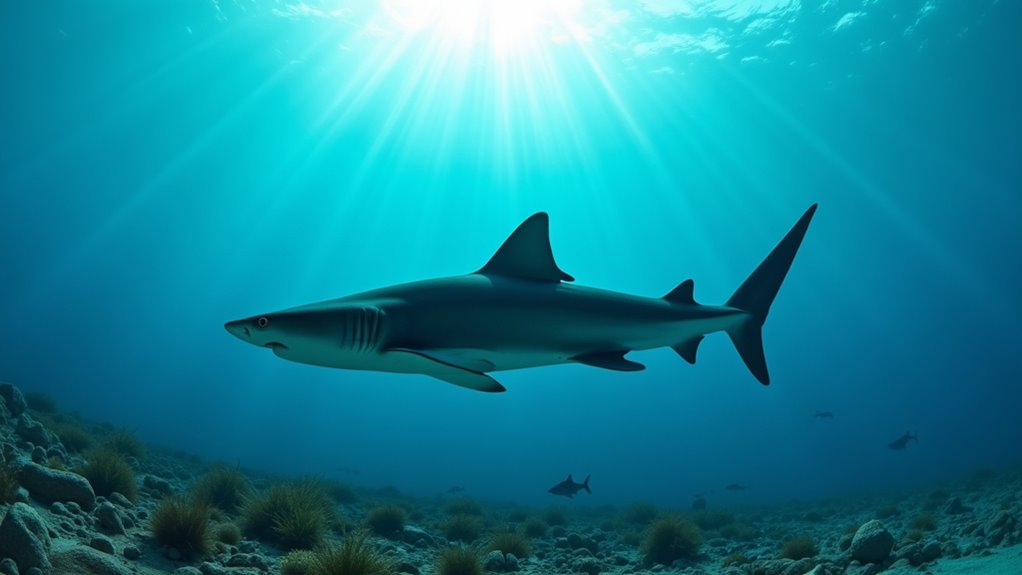
Sharks lurk in the Aegean Sea – discover which of the 33 species you might encounter and why attacks remain surprisingly rare.
Yes, the Aegean Sea hosts over 33 shark species, though you’ll rarely encounter them. Common species include the blue shark, basking shark, shortfin mako, porbeagle, thresher shark, sandbar shark, and small-spotted catshark. Despite their presence, shark attacks in Greek waters are extremely rare, with only 15 recorded incidents over 170 years. While many Aegean sharks face endangerment, they’re essential to the ecosystem’s health and represent an important conservation priority.
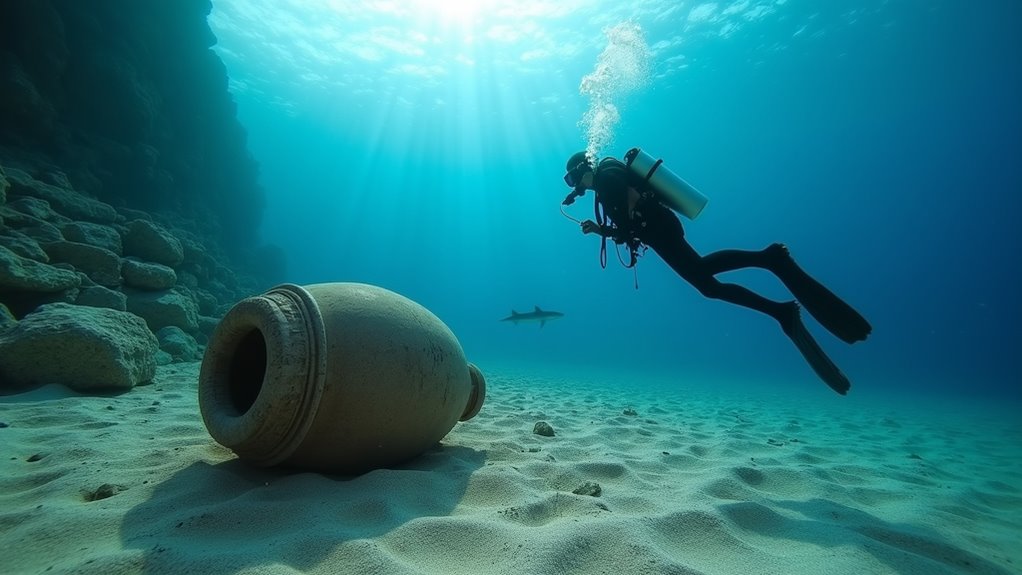
While today’s Aegean Sea might seem relatively shark-free to most visitors, historical records paint a dramatically different picture. Research has uncovered 197 documented shark sightings between 1883-1983, with 83% occurring in the Aegean waters. The recent 90-year study on Greek marine biodiversity confirms that no marine area in Greece has been unvisited by sharks, rays, or chimaera in the last 100 years.
Sightings peaked around 1969, clustering near major ports and cities. Athens’ surrounding waters (Saronikos and Evoikos Gulfs) accounted for over 25% of encounters, with Thessaloniki and Kavala Bays following at 18%.
The Aegean’s shark population was once diverse, with 33 species recorded. Large specimens were commonly spotted, including 4.5-meter sharks and even great whites in the northern regions.
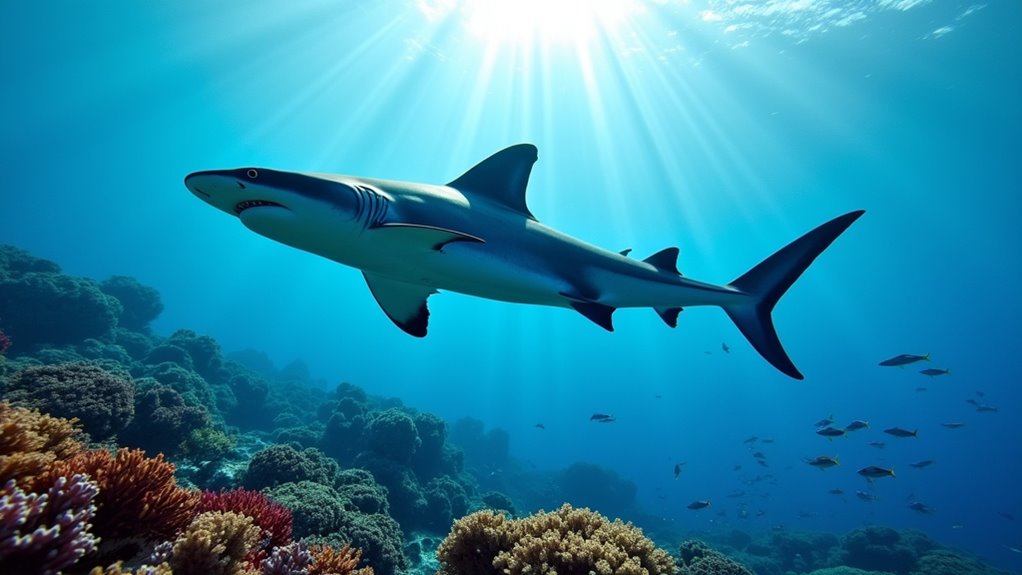
The blue shark (Prionace glauca) stands as the most frequently encountered shark species in the Aegean Sea today. You’ll find these sleek predators in open waters from the surface down to 350 meters, rarely venturing close to shores except near islands.
Their streamlined bodies feature distinctive long, pointed pectoral fins and rounded snouts—perfect adaptations for their highly migratory lifestyle. Blue sharks prefer cooler temperatures (12-20°C) and often follow seasonal prey movements across vast distances. Recent research suggests that these sharks may represent a distinct Mediterranean stock separate from Atlantic populations.
These opportunistic hunters primarily target bony fish and cephalopods, hunting both day and night. Though common throughout temperate and tropical oceans worldwide, blue sharks face significant threats from fishing pressure.
Blue sharks prowl tirelessly for prey while facing mounting threats from human fishing activities across global waters.
They’re currently listed as Near Threatened by the IUCN, with Mediterranean populations under particular stress from longline and driftnet fisheries.
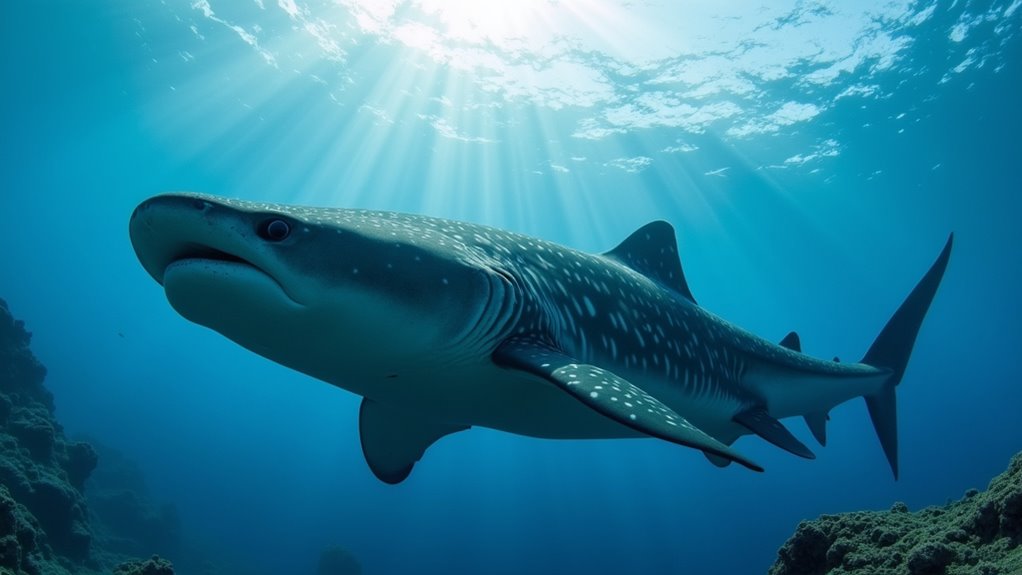
Among the most fascinating visitors to the Aegean Sea stand the basking sharks (Cetorhinus maximus), gentle giants that can reach an impressive 12 meters in length. Despite their massive size, you’ll find these sharks are completely harmless to humans, feeding exclusively on plankton and small marine organisms.
Unlike predatory sharks, basking sharks employ ram feeding—swimming with their mouths wide open to filter food through specialized gill rakers. You might spot them during seasonal migrations through Greek waters, though sightings remain relatively rare.
These vulnerable creatures face significant conservation challenges including overfishing, accidental bycatch, and habitat degradation. With a lifespan of approximately 50 years, basking sharks have little opportunity to recover from population declines caused by human activities. They share their filter-feeding lifestyle with whale sharks and megamouth sharks, though each has evolved this strategy independently and inhabits different marine environments.
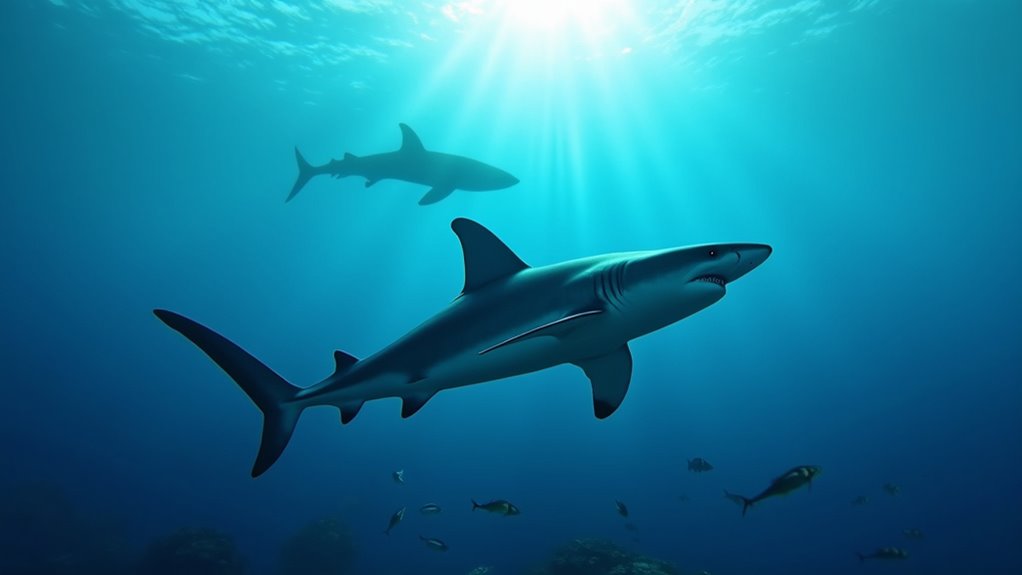
Moving from the gentle filter-feeders, you’ll find a dramatically different shark species patrolling deeper Aegean waters. The shortfin mako (Isurus oxyrinchus) is the Aegean’s speedster, capable of bursts up to 46 mph as it hunts tuna and swordfish.
These solitary predators prefer offshore temperate waters and won’t venture into areas colder than 16°C. Their endothermic physiology maintains an elevated body temperature, allowing them to thrive in the Aegean’s deeper zones. Known for their incredible leaping ability, makos can often be observed jumping completely out of the water when pursuing prey.
Solitary hunters with internal heating systems, makos thrive in the Aegean depths where temperatures remain above 16°C.
While makos are present throughout the eastern and central Mediterranean, they’re less common than in the Atlantic. They’re typically spotted near productive shelf/slope areas where their prey concentrates.
Unfortunately, overfishing has placed Mediterranean mako populations under significant pressure, with the IUCN listing them as endangered.
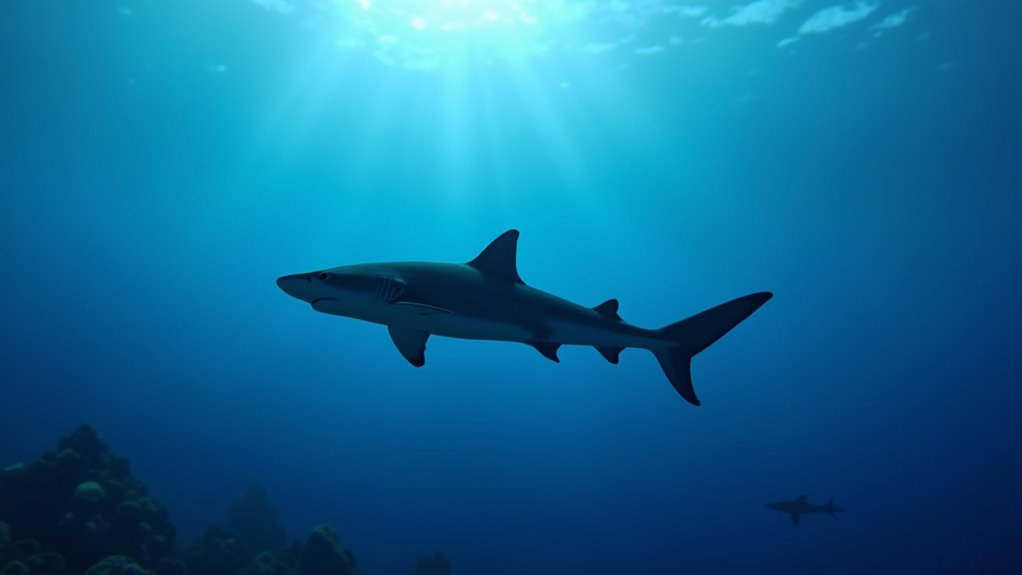
While historic Mediterranean waters once teemed with diverse shark populations, today’s Aegean Sea paints a far more concerning picture for these ocean predators. The Mediterranean has become a hotspot for shark extinction risk, with over 50% of assessed species now threatened.
When exploring the Aegean, you should be aware of these critically endangered species that need protection:
The Basking shark, which can grow to the size comparable to a double-decker bus, is among the largest Mediterranean sharks requiring protection. Conservation efforts are urgently needed as these species’ decline threatens the entire marine ecosystem‘s balance.
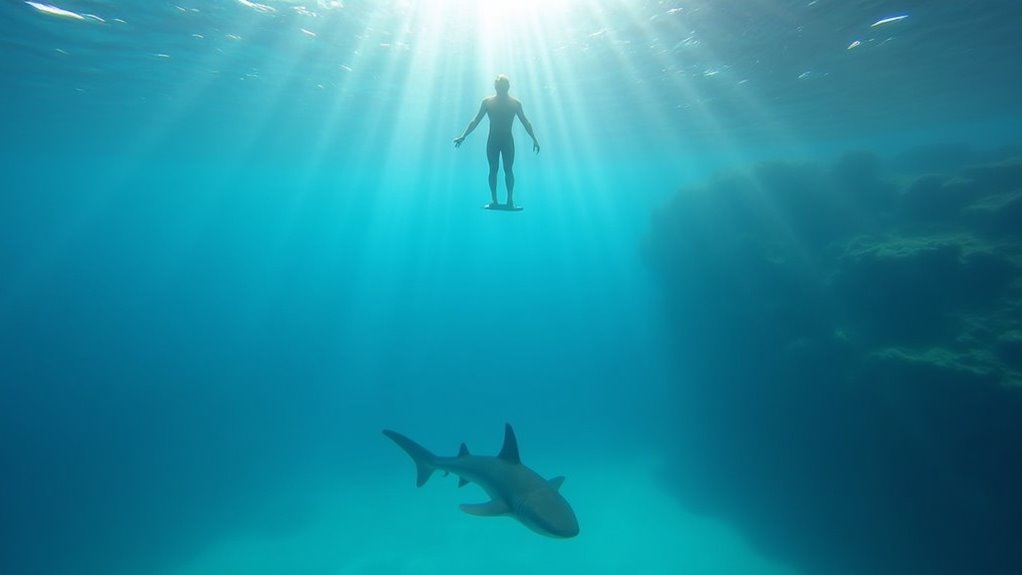
Despite popular misconceptions about shark dangers, the Aegean Sea presents minimal risk to swimmers and travelers. There have been no reported shark attacks off Santorini’s coast, highlighting the rarity of dangerous encounters in this region. Historical data confirms this safety record with only 15 attacks and a single fatality recorded in Greece over the past 170 years.
Despite widespread fears, sharks pose virtually no threat to visitors in Santorini’s pristine Aegean waters.
Most shark species inhabiting these waters aren’t aggressive toward humans unless provoked. You’re far safer than sensationalized media might suggest.
For added peace of mind, swim in groups, avoid areas with bait fish, and stay in well-lit, populated waters.
Swimming at dawn or dusk slightly increases the minimal risk, as these are typical feeding times. Remember, sharks naturally avoid human contact.
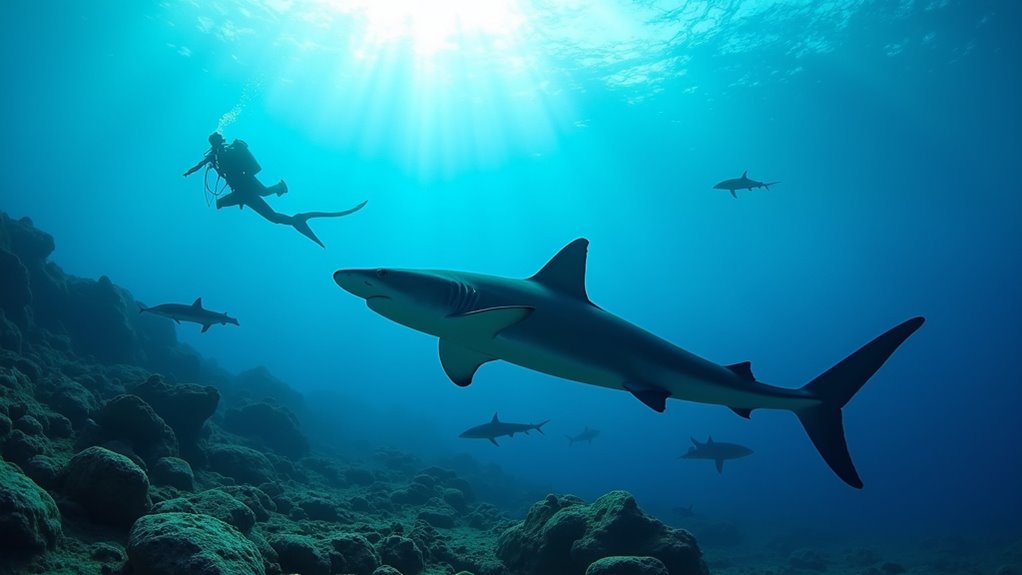
Amidst increasing global concern for marine life, conservation efforts for shark populations in the Aegean Sea have gained significant momentum. Organizations like iSea and the Shark Trust are leading projects focused on the three Critically Endangered angel shark species that inhabit these waters.
These conservation initiatives include:
The Angel Shark Project, supported by grants from the Shark Conservation Fund, collects essential data that you’ll find indispensable for establishing effective conservation policies and monitoring population changes over time. The waters surrounding Crete have been identified as a key Southern Aegean hotspot for angel shark conservation activities.
As you dip your toes in the azure Aegean waters, remember that sharks are rare neighbors, not lurking threats. The seven species swimming these seas face greater dangers from us than we do from them. By supporting conservation efforts and practicing responsible tourism, you’ll help guarantee these ancient mariners of the deep continue to balance Mediterranean ecosystems for generations to come.